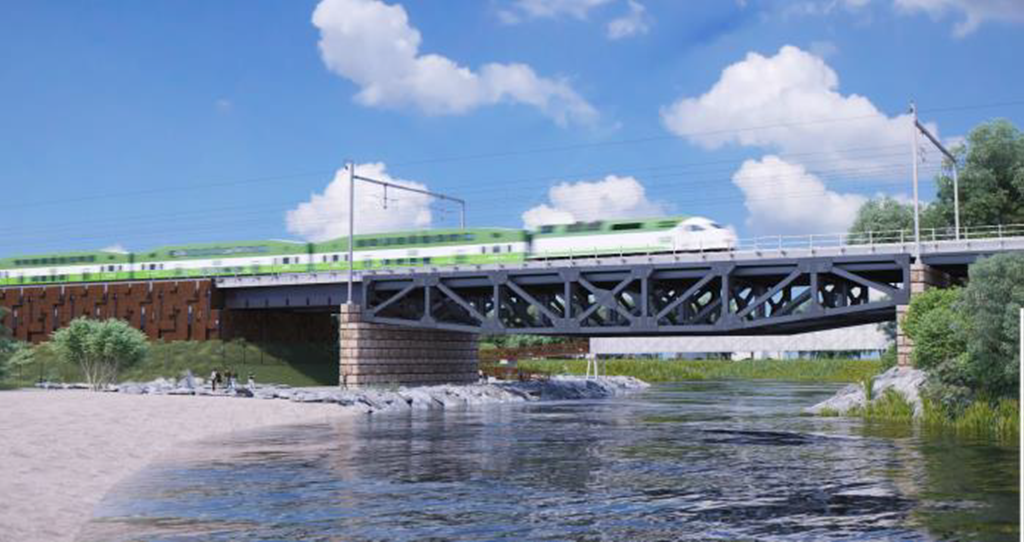Continued from Electrification thread
The ERTMS - european rail traffic management system signaling sounds interesting. whatever it is, its goig to be the first time in north america
30 trains per hour on a single track? jezuz.
so its just an open signaling standard using PTC? rather whats the difference between PTC, ATC, and CBTC
That was literally an exam question in a course I took on railway signalling, so here goes:
PTC and ATC are part of the spectrum from ATP to ATO, which describe different levels of automation.
ATP is Automatic Train Protection. This is when a signal system monitors the train and intervenes if it violates any signal aspects (e.g. overspeed, passing red signal), but the trains are otherwise fully manually operated. I'm not familiar with the American PTC standard, but I believe it is a form of ATP.
ATC is Automatic Train Control. The signal system can pretty much drive the train, but it still requires some level of driver input. This is what we have on Line 1.
ATO is Automatic Train Operation. The trains can fully operate themselves, and if there is an operator they just monitor the system and/or do busy work like closing the doors. This is what we have on Line 3.
CBTC is Communications-Based Train Control. In general that means that there's continuous two-way communication (usually radio) between trains and the control centre, with movement authority (permission to proceed across a given segment of track within a given speed profile) issued continuously. This is pretty much a prerequisite for moving-block signalling, which is the main reason it gets implemented.
ERTMS is the European Rail Traffic Management system, which is the umbrella term for railway control standards in the EU.
The railway signalling component of ERTMS is called ETCS (European Train Control System). Extremely important to note:
ETCS is not a particular signalling system! It is a set of EU standards which be used for a wide variety of signalling systems, from low-capacity to high-capacity. ETCS is divided into Levels of increasing complexity & capacity. Level 1 is a fairly ordinary system, Level 3 is the first level which includes the 2-way communication required for moving block signalling. The vast majority of ETCS systems are Level 1 or Level 2, and means that they cannot support moving block signalling, and the impressive capacity associated with it.
Why couldnt the TTC use [ETCS] for the subways?
This is roughly the topic of an assignment from that course (what's the difference between CBTC and ERTMS). ETCS Level 3 is technically a CBTC system, but when I say CBTC I'm referring to proprietary metro signalling systems such as the one the TTC installed on Line 1.
Excerpt from an assignment of mine:
5 Comparison of CBTC and ERTMS
The characteristics of CBTC include a considerable overlap with those of the European Rail Traffic Management System (ERTMS) and its signalling subsystem European Traffic Control System (ETCS). ERTMS is the railway control standard developed by the European Union Agency of Railways to replace the different and often incompatible national signalling systems currently used in different member countries. Although the primary goal of ERTMS is to improve compatibility between countries, a secondary goal is also to increase railway capacity much like CBTC. As a result, the two systems will be compared with the goal of identifying ways in which the implementation of ERTMS could make use of lessons or characteristics from CBTC.
ETCS standards are divided into Levels, which are system architectures with varying levels of support for capacityimprovement features such as moving-block control and continuous ATP. Level 1 represents a relatively traditional architecture, with wayside-based train detection and intermittent communication to trains. But higher ETCS levels begin to incorporate features associated with CBTC. Level 2 includes continuous radio communication with the radio block centre, although it still relies on wayside equipment for redundant train detection and vehicle integrity monitoring. Level 3 represents fully communication-based train control where vehicle position and movement authorities are continuously monitored via radio communication (GSM-R) and it is therefore theoretically possible to implement moving-block signalling.
5.1 Defintions
With so many technical similarities between CBTC and ETCS Level 3, in order to compare the two systems, each needs to be specifically defined.
For the sake of comparison, the definition of CBTC will be as per IEEE specification 1474.1, namely a train protection and control system with a high precision for train location, and both onboard and wayside processors which manage movement authorities. In addition, CBTC systems will be assumed to include moving blocks and automatic train operation (ATO) because although they are not strictly part of the definition of CBTC, access to those features are typically driving factors behind new implementations of CBTC [1].
In general, CBTC tends to operate on more self-contained railway lines such as metro, light rail or occasionally commuter rail lines, whereas ERTMS is designed for the European mainline rail network where there is a full range of train types and services. However since this distinction is not structural in nature, it will not be in itself considered part of
the definitions of the respective signalling systems.
Some characteristics of ETCS and CBTC are outlined in Table 1 and described in the following subsections.







